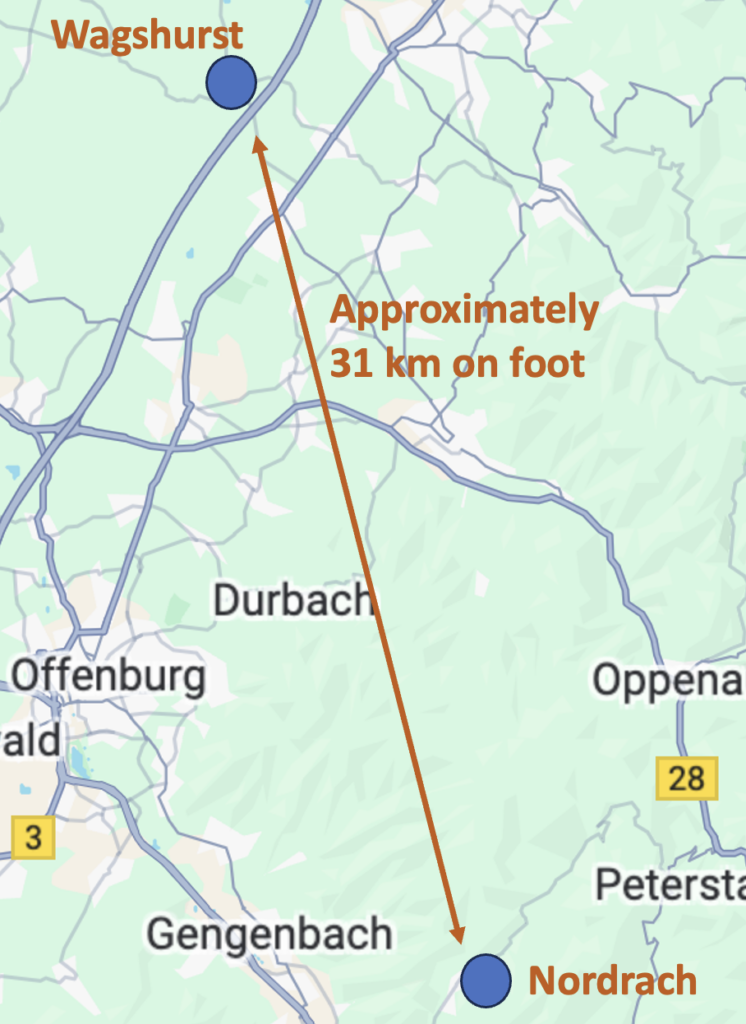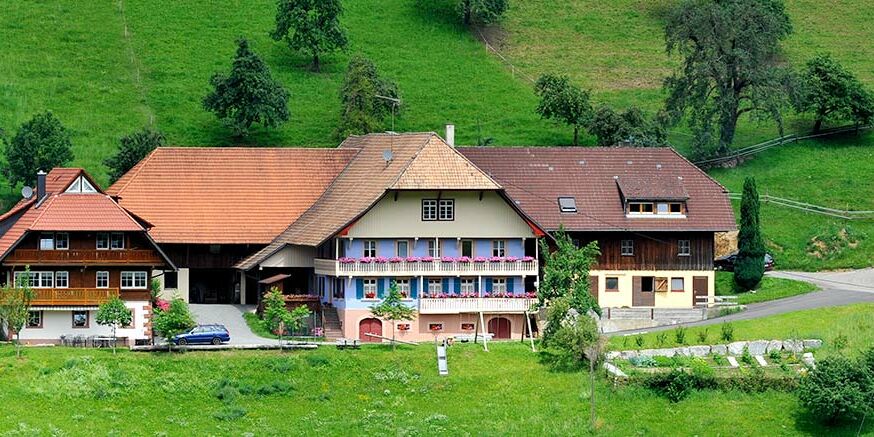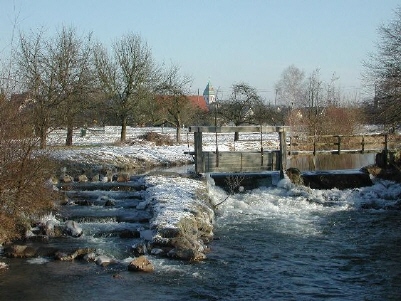In 2004 Jim Riehle of Ontario Canada, a descendant of the Wagshurst Riehle lineage, provided Riehle.Net with an article on The Baden Region & the Thirty Years War. Jim’s article is about history while the following article includes genealogical speculation, but with that stipulation, we consider here how this brutal war might have impacted his paternal lineage.
The earliest identified Riehle in Wagshurst, Baden is thought to have been one of many men with the name Johannes Riehle. Though unverified, we think this one was born “in Germany” in 1630, right about in the middle of the Thirty Years War, and died in Wagshurst in 1674. His son, Markus, is thought to have been born in Wagshurst in 1650. We have a 17th century source marking the baptism of Marcus’s son, also Johannes, in 1674.
Through Y-DNA testing sponsored by this website we have verified Y-haplogroup data confirming Markus’s grandson, Mathias Riehle (b.1697), as having had a variant within the Y-haplogroup E-V13 which is shared with an identified Riehle lineage out of Nordrach Baden (variant FTB92833) as well as a subsequent variant (FTD87666) so far associated only with the Wagshurst line. Thus we have confirmed that the FTB92833 variant, but not FTD87666, was held by a different Mathias Riehle out of Nordrach Baden (b.1681). Nordrach is about 31 km by road southeast of Offenburg, Baden-Württemberg via a circuitous route deep into the Black Forest. It is about 50 km south of Wagshurst by car, about 31 on foot.

The earlier Y-DNA variant carried by both Nordrach and Wagshurst lines has a point estimate of origination at 1631, the year after Johannes’s birth. It is possible Johannes (b.1831) or son Markus were the originators of the variant but this is unlikely. Our information, though unverified, suggests Johannes lived in Wagshurst from no later than age 20 and then through the rest of his life, while Markus was born, married, fathered children, and died in Wagshurst. So while physically possible, it is unlikely that either fathered a lineage (with their surname duly attached) that can be traced out of Nordrach starting at or before Mathias of Nordrach, b.1681. The father of our Wagshurst Mathias (the Johannes discussed above, baptized in Wagshurst in 1674) cannot have fathered the the Nordrach lineage with it earliest identified ancestor born only seven (7) years after his birth.
All this suggests that the most recent common ancestor (MRCA) of the two lines was likely born at least a generation before Johannes (i.e., the one born 1630). Johannes’s father (unknown) was likely born very late in the 16th century or during the first 14 year of the 17th century (i.e., 16 or more years before Johannes’s birth). The father’s birth would thus have been before the start of the war with its flood of refugees, which we believe was the likely catalyst for the family’s geographic divergence and the arrival of teen-aged Johannes (b.1630) in Wagshurst, very late in the war or the year after it ended. This places him there in time for him to father Markus Riehle with his birth in 1650.
Since both lineages have the FTB92833 variant, the MRCA of the Wagshurst and Nordrach lines would certainly have had that variant. This could have originated in a man born in the 16th or even 15th century (the latter being unlikely), however with with a point estimate of the origination date at 1631, and if we eliminate Johannes (b.1630) from contention as the originator for reasons explained above, the most likely generation would be that of Johannes’s father. If that is the case Johannes might have been the granduncle (brother to the grandfather) of Mathias of Nordrach. We don’t know his name or birthdate but a good estimate of birth for the MRCA would be about 1600 +/- 15 years, with the understanding that the MRCA might have preceded this timing by one or several generation.
While, statistically, the most likely relationship between Johannes and the grandfather of Mathias of Nordrach is that of brothers, the probability of this is less than 50%. The alternatives for the relationship between Johannes and a man of the equivalent-generation within our identified Nordrach lineage could be a first cousins, or (with decreasing likelihood) a second cousin, or even a more remote cousin. Family Tree DNA suggests the MRCA was born no earlier than 1511 (with ~84% confidence) or 1368 (97% confidence). This suggests with ~84% confidence the relationship was that of 3rd cousins or closer, again, with brothers the most likely.
If you read Jim’s article on that terrible war it is not hard to imagine Johannes’s birth-home being destroyed and/or his family scattered. A surviving teenaged son born in 1630 might have been coerced into the fight, or readily enlisted as a way to find adventure and escape starvation, or simply fled the town of his birth amid the death and destruction. In any case, by the time Johannes’s son was born in 1650, soon after the war ended in 1648, Johannes seems to have been settled in Wagshurst. Johannes may have been born in the Nordrach area with a brother or brothers who remained there or who returned at the end of the war. The existence of a “Rielin” family in Nordrach in the 17th century might suggests older roots in this part of the Black Forest, so there is more opportunity for investigation and for the recruitment of other Riehle/Rielin descendants willing to do Y-DNA testing.
This is obviously a work in progress, so stay tuned for updates. Better still, support our Y-DNA testing program and help resolve the outstanding questions regarding this early Riehle migrations.
Note re. verified ancestry on the Global Wikitree:
…….The MRCA of the Wagshurst cousins for whom we have detiled Y-DNA testing is listed at Wikitree.com as Mathias Riehle (Wikitree: Riehle-156), born 1697. Y-DNA support for Mathias is given on his WikiTree profile. Though the reliability of our genealogical sources declines with the preceding generations, we believe his male ancestors are as shown here, which includes Johannes, discussed above and estimated to have been born 1630 in Germany, perhaps in Nordrach.
…….The earliest ancestor of the Nordrach DNA tester is identified on WikiTree as another Mathias Riehle (Riehel-197) born 1681 and discussed above.
The Baden Region & The Thirty Years War
Riehle Y-DNA Haplogroup Research
Balkan/Swabian Roots with Related Y-DNA Subclades

Have a Riehle Holiday!
Riehle Valleys – Map showing Riehle Hof south and southeast of Nordrach and
Gengenbach. Both are deep in Black Forest Valleys containing relativity high densities
of Riehle families. We have also identified Riehle’s in the Oberharmersbach valley.
Riehle.Net is sponsoring work by a local, professional genealogist to research and
hopefully connect these Riehle groups to each other and to North American cousins.

